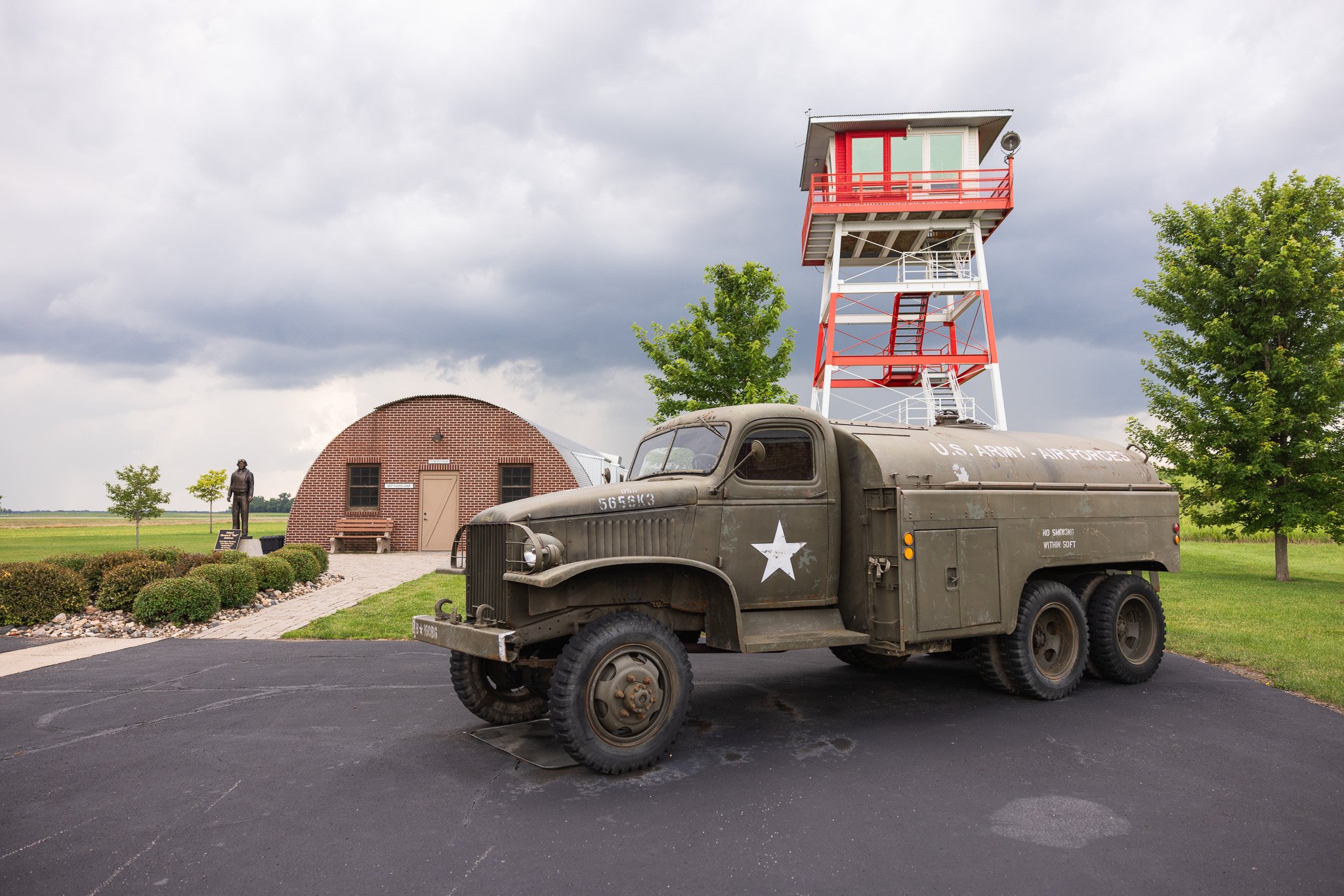
Trainer Hangar
Fagen Fighters WWII Museum
Our trainer hangar serves as the initial point of entry into the museum experience. Upon arrival, guests are warmly welcomed by our staff members who assist with check-in procedures and offer insight into the museum’s layout. This particular hangar showcases a collection of authentic aircraft utilized for training young pilots during WWII.
Aircraft
The Trainer Hangar at Fagen Fighters WWII Museum houses a collection of airworthy trainer planes, including the PT-17, PT-19,
PT-22, PT-26, and BT-13. One unusual addition is the Jenny, the only non-WWII item in the museum. Alongside these aircraft is a rare Waco Glider, providing visitors with a glimpse into the training methods and tools used during WWII.
The CG-4 WACO Glider
History
The CG-4A glider, short for C-for cargo and G-for glider, served as a key component of the U.S. Army Air Forces glider fleet during World War II. The CG-4A glider showcased at Fagen Fighters WWII Museum originates from an original WWII-era airframe discovered in the inventory of Villaume Industries in Eagan, MN. Villaume Industries, once situated in St. Paul, remains operational today and was a subcontractor for Northwestern Aeronautical throughout WWII, responsible for manufacturing more than 1500 CG-4A gliders during the war.
Volunteers dedicated a span of 5 years to meticulously researching and reconstructing the airframe to its authentic specifications, successfully finishing the project in 2012. Following its completion, Fagen Fighters WWII Museum acquired the glider, now proudly exhibited as a testament to the sole aircraft type produced in Minnesota during WWII.
Learn More About The History
-
The Waco CG-4A was designed by the Waco Aircraft Company based in Troy, Ohio according to specifications from the U.S. Army Air Corps. Francis Arcier, a Waco vice-president and chief designer, is often credited as the "father" of the CG-4A. A total of 13,903 CG-4A gliders were manufactured between 1942 and 1945. Ford Motor Company, one of the 16 prime contractors, produced 4,190 units, surpassing the second-largest producer by far with 1,509 units. Other contractors included Gibson, Northwestern Aeronautical, Pratt-Reed, Laister-Kauffmann, Cessna Aircraft, among others.
Despite its seemingly simple exterior, the final production models of the CG-4A were composed of just over 70,000 parts. The unique feature of the glider was its nose section, including the pilot's compartment, which swung upward to create a 70 x 60 inch opening into the cargo compartment, facilitating quick loading and unloading. The glider was used to transport various payloads such as fighting men, vehicles like jeeps with radio equipment, artillery, and other combat supplies.
Unlike powered airplanes that could be flown or shipped fully assembled, gliders had to be disassembled and shipped in crates. For instance, a single CG-4A glider required five large wooden crates for overseas shipment. Assembly upon reaching their destinations was a delicate process, requiring several days to unload, uncrate, and reassemble the gliders before they were ready for test flights.
By February of 1944, a total of 2,100 crated Waco CG-4A gliders had been shipped to England from American factories. The only people left to assemble them were untrained British civilians. The results were disastrous, and in October, the IX Air Force Service took over and managed to put together 910 Wacos by the middle of April. With only five weeks remaining until D-Day, the glider shortage had barely been conquered in time.
The CG-4A glider came into its own on D-Day with the invasion of Normandy. Operation Overlord, the Allied invasion of German-occupied France, started on June 6, 1944. Operation Overlord was launched from the sea against one of the strongest armies in the world, inside the most elaborately equipped defensive network ever created. Almost all the gliders used in Normandy in June 1944 were lost.
The Gift Shop
Our gift shop, situated at the entrance of the Trainer Hangar near the front desk, is a treasure trove of offerings. Patrons can discover a wide array of items such as Fagen Fighters WWII Museum merchandise, WWII Veteran’s books, WWII history books, aircraft prints, hats, accessories, and various other souvenirs. Visit us to explore these fascinating collectibles and bring home a piece of history from Fagen Fighters WWII Museum.

357th Replica




